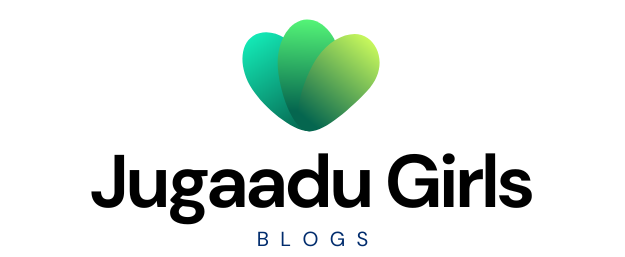Diabetes is a chronic condition that affects millions of people worldwide. While medical management is essential, there are natural remedies that can complement traditional treatment and help manage blood sugar levels. Here, we will explore 11 effective natural remedies for managing diabetes at home. These remedies include incorporating cinnamon, fenugreek seeds, bitter melon, apple cider vinegar, chia seeds, flaxseeds, green leafy vegetables, whole grains, berries, nuts, legumes, and sweet potatoes into your diet. Each of these remedies offers unique benefits, such as improving insulin sensitivity, stabilizing blood sugar levels, and providing essential nutrients.
By incorporating these natural remedies for diabetes into your routine and working closely with your healthcare provider, you can enhance your diabetes management and lead a healthier, balanced life.
What is Diabetes?
Diabetes is a chronic medical condition characterized by elevated blood sugar levels due to problems with insulin production or insulin resistance. Insulin, a hormone produced by the pancreas, helps regulate the amount of sugar (glucose) in the bloodstream and facilitates its entry into cells to be used as energy.
Uncontrolled diabetes can lead to various complications, including cardiovascular disease, kidney damage, nerve damage, and vision problems.
Management of diabetes involves maintaining blood sugar levels within a target range through a combination of healthy eating, regular physical activity, medication (if necessary), and regular monitoring of blood glucose levels.
Understanding the different types of diabetes, their causes, and the importance of effective management is crucial for individuals with diabetes to live a healthy and fulfilling life. Regular check-ups and ongoing support from healthcare professionals are essential for proper diabetes management and prevention of complications.
Types of Diabetes

. Type 1 Diabetes: This type occurs when the immune system mistakenly attacks and destroys the insulin-producing cells in the pancreas. It is usually diagnosed in childhood or early adulthood. Individuals with type 1 diabetes require insulin injections or the use of an insulin pump to manage their blood sugar levels.
. Type 2 Diabetes: This is the most common form of diabetes, accounting for the majority of cases. It occurs when the body becomes resistant to insulin or fails to produce enough insulin. Lifestyle factors such as poor diet, sedentary lifestyle, and obesity contribute to the development of type 2 diabetes. It can often be managed through lifestyle changes, medication, and in some cases, insulin therapy.
. Gestational Diabetes: This type occurs during pregnancy and usually resolves after childbirth. Hormonal changes during pregnancy can affect insulin production and utilization, leading to elevated blood sugar levels. Proper management is essential to ensure the well-being of both the mother and the baby.
Causes of Diabetes
. Genetic Factors: A family history of diabetes can increase the risk of developing the condition. Certain genes can predispose individuals to both type 1 and type 2 diabetes.
. Lifestyle Factors: Unhealthy lifestyle choices, such as poor diet, lack of physical activity, and excessive weight gain, contribute to the development of type 2 diabetes. These factors can lead to insulin resistance and impaired glucose metabolism.
. Autoimmune Response: Type 1 diabetes is believed to be an autoimmune disease, where the body’s immune system mistakenly attacks and destroys the insulin-producing cells in the pancreas.
Symptoms of Diabetes

. Frequent Urination: Increased blood sugar levels lead to excessive urination as the kidneys work to eliminate the excess sugar from the body.
. Excessive Thirst: The frequent urination can cause dehydration, leading to increased thirst.
. Unexplained Weight Loss: Individuals with diabetes may experience sudden weight loss despite an increased appetite. This occurs as the body is unable to properly utilize glucose for energy.
. Fatigue: High blood sugar levels can interfere with the body’s ability to convert glucose into energy, leading to persistent fatigue and lack of energy.
. Blurred Vision: Elevated blood sugar levels can cause fluid to be drawn from the lenses of the eyes, resulting in blurry vision.
. Slow Healing of Wounds: Diabetes can impair the body’s ability to heal wounds, leading to prolonged healing times and increased risk of infections.
. Recurring Infections: High blood sugar levels can weaken the immune system, making individuals with diabetes more susceptible to infections, especially in the urinary tract, skin, and gums.
. Tingling or Numbness: Diabetes can damage the nerves over time, leading to tingling or numbness, especially in the hands and feet.
. Increased Hunger: Despite eating regularly, individuals with diabetes may experience persistent hunger due to the body’s inability to properly utilize glucose for energy.
. Skin Changes: Diabetes can cause skin conditions such as dryness, itching, and darkening of the skin in certain areas.
It is important to note that symptoms can vary among individuals, and some individuals with type 2 diabetes may not experience noticeable symptoms initially. Regular check-ups and blood sugar monitoring are essential for early detection and effective management of diabetes.
11 Home Remedies for Managing Diabetes Naturally

1. Cinnamon
The Spice that Supports Blood Sugar Control Cinnamon is a popular spice known for its aromatic flavor and potential health benefits, including supporting blood sugar control. Studies have shown that cinnamon can improve insulin sensitivity, increase glucose uptake by cells, and reduce fasting blood sugar levels. Adding a sprinkle of cinnamon to your morning coffee, oatmeal, or yogurt can be a delicious and beneficial addition to your diet.
2. The Magic of Fenugreek Seeds
Diabetes Fenugreek seeds have a long history of use in traditional medicine for managing diabetes. These small, bitter seeds are rich in fiber and several bioactive compounds that help lower blood sugar levels. Fenugreek seeds can be soaked overnight and consumed on an empty stomach in the morning. They can also be ground into a fine powder and added to dishes like curries, soups, or smoothies.
3. Bitter Melon
A Natural Blood Sugar Regulator Bitter melon, also known as bitter gourd, is a vegetable with potent anti-diabetic properties. It contains compounds that can help improve insulin sensitivity and regulate blood sugar levels. Bitter melon can be consumed as a juice or incorporated into various dishes, such as stir-fries or curries. However, its bitter taste may require some getting used to.
4. Apple Cider Vinegar
An Unexpected Aid for Diabetes Apple cider vinegar has gained attention for its potential benefits in blood sugar management. It has been shown to improve insulin sensitivity, reduce post-meal blood sugar spikes, and increase feelings of fullness. Diluting one to two tablespoons of apple cider vinegar in a glass of water and consuming it before meals can be an effective way to incorporate it into your routine. However, it’s important to note that undiluted vinegar can damage tooth enamel and irritate the throat, so it should always be diluted.
5. Chia Seeds and Flaxseeds
Omega-3 Rich Chia Seeds and Flaxseeds Chia seeds and flaxseeds are tiny powerhouses of nutrition, packed with omega-3 fatty acids, fiber, and essential nutrients. They can help stabilize blood sugar levels and improve heart health. These seeds can be added to smoothies, yogurt, oatmeal, or used as an egg substitute in baking recipes.
6. Green Leafy Vegetables
Benefits of Green Leafy Vegetables for Diabetics Green leafy vegetables, such as spinach, kale, and collard greens, are low in calories and high in fiber, vitamins, minerals, and antioxidants. They have a low glycemic index and can help regulate blood sugar levels. Incorporating a variety of green leafy vegetables into your diet through salads, stir-fries, or soups can provide numerous health benefits.
7. Whole Grains
The Power of Whole Grains in Diabetes Management Whole grains, such as quinoa, brown rice, and whole wheat, are rich in fiber, vitamins, minerals, and antioxidants. They have a lower glycemic index compared to refined grains, meaning they have a less significant impact on blood sugar levels. Incorporating whole grains into your meals, such as choosing whole grain bread, pasta, and cereals, can provide a sustained release of glucose and help blood sugar management.
8. Berries
A Sweet and Nutritious Choice for Diabetics Berries, including strawberries, blueberries, and raspberries, are packed with antioxidants, vitamins, minerals, and fiber. They are also low in calories and have a low glycemic index, making them a great choice for individuals with diabetes. Enjoy them fresh as a snack, add them to smoothies, or use them as toppings for yogurt or oatmeal.
9. Nuts
The Healthy Snack for Blood Sugar Control Nuts, such as almonds, walnuts, and pistachios, are nutrient-dense and provide a good source of healthy fats, protein, and fiber. They have been shown to improve blood sugar control and reduce the risk of heart disease. Including a handful of nuts as a snack or incorporating them into meals can provide a satisfying and nutritious option.
10. Legumes
A Protein-Rich Food for Diabetes Legumes, including lentils, chickpeas, and beans, are excellent sources of protein, fiber, and essential nutrients. They have a low glycemic index and can help regulate blood sugar levels. Incorporate legumes into your meals as a protein source or make delicious soups, stews, or salads with them.
11. Sweet Potatoes
A Healthy Carb Option Sweet potatoes are a nutritious alternative to white potatoes. They are high in fiber, vitamins, and minerals and have a lower glycemic index. They provide a slow release of glucose into the bloodstream, helping to maintain stable blood sugar levels. Enjoy baked or roasted sweet potatoes as a side dish or incorporate them into casseroles and salads.
Conclusion
Natural remedies can play a supportive role in managing diabetes at home. Incorporating cinnamon, fenugreek seeds, bitter melon, apple cider vinegar, chia seeds, flaxseeds, green leafy vegetables, whole grains, berries, nuts, legumes, and sweet potatoes into your diet can help support blood sugar control and overall diabetes management.
However, it’s important to remember that these remedies should not replace medical advice and treatment. It’s crucial to work closely with your healthcare provider to ensure that these natural remedies are suitable for your specific needs and to monitor your blood sugar levels regularly. With a combination of natural remedies, a healthy lifestyle, and proper medical management, you can take control of your diabetes and improve your overall well-being.


